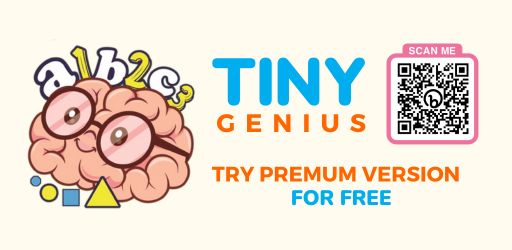Code Like a Kid: Fun and Interactive Coding Lessons for the Young Minds
Is your child showing an interest in coding or you simply want them to be ready for the digital future? Research shows that learning to code at a young age unlocks creativity and career potential.
This blog is crafted with the perfect blend of fun and interactive coding lessons designed specifically for young curious minds. Let's dive into the world of kid-friendly programming!
The Importance of Coding for Kids
Coding for kids is not just a trend but a crucial skill that unlocks their creativity and enhances their career potential.
Unlocking Creativity
Introducing coding to kids at a young age goes beyond technical skills, it also serves as a key to unlocking their creativity. Coding, much like any art form, is an outlet for children to express themselves and build confidence in their ideas.
As they learn how coding works and see the results of what they've coded, they're inspired to think outside the box. This immersion into creative problem-solving encourages them to devise innovative solutions using technology as their canvas.
Hence, early exposure not only equips them with practical knowledge but enhances their imaginative capacities as well - setting up success pillars across various potential career paths.
Enhancing Career Potential
Introducing kids to coding at an early age can significantly amplify their career prospects. Coding skills are not just demanded in the technology field but have found importance across various industries such as finance and healthcare.
Young coders gain a competitive advantage with comprehensive knowledge of computer programming for kids that aids them in realizing creative ideas and solving complex problems.
Moreover, companies globally increasingly seek employees who understand how to code, making it a valued skill set. By learning popular coding languages for kids like Scratch, Python, or JavaScript, young learners prepare themselves for future success in this digital age.
They are able to capitalize on incoming opportunities in STEM fields while standing out amongst peers during college applications and job interviews later on.
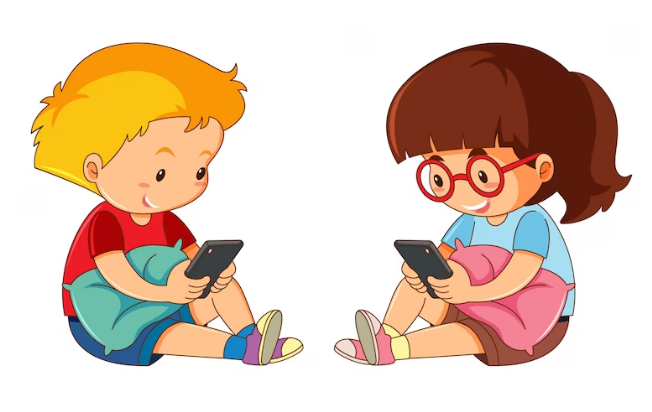
Mental Math App for Kids
The mental math games are all about the ability of thinking and solving a problem in your head. It builds that critical thinking in a child’s mind and makes him able to deduce solutions to different problems.
Advantages of Learning to Code
Learning to code provides young minds with valuable advantages such as the development of problem-solving skills, critical thinking abilities, and resilience.
Problem-Solving Skills
Introducing children to coding develops paramount problem-solving skills. It's not just about understanding technology; it's the mental workout of breaking down complex issues into manageable parts.
This process sharpens their analytical thinking and decision-making skills, applicable in all areas of life. Code Like a Kid focuses on this aspect during its coding lessons, turning young coders into critical thinkers.
The result is a high success rate of 95%, proving that children can excel while acquiring valuable computational knowledge essential for their future careers.
Critical Thinking
Developing critical thinking skills is a key benefit of learning to code with Code Like a Kid. Through coding, young minds are encouraged to think logically, analyze problems, and find innovative solutions.
This essential skill extends beyond the world of programming and becomes applicable in various real-life scenarios. By breaking down complex problems into smaller manageable tasks, kids learn how to approach challenges systematically and strategically.
With practice and guidance from Code Like a Kid's interactive lessons, children develop the ability to evaluate different options, make informed decisions, and think critically about the consequences of their actions.
Resilience
Resilience is a key skill that children develop when learning to code. As they encounter challenges and errors in their coding projects, they learn to persevere and find solutions through trial and error.
This process builds their resilience by teaching them not to give up easily and to keep trying until they succeed. Research has shown that resilience is an important trait for success in any field, as it helps individuals bounce back from setbacks and adapt to changing circumstances.
By facing coding obstacles head-on, young coders build the resilience necessary for navigating future challenges in their academic pursuits and careers.
Learning to code requires patience, dedication, and a willingness to try again after failing. This iterative approach fosters problem-solving skills while also reinforcing the importance of perseverance in achieving goals.
The ability to overcome obstacles is a valuable life lesson that extends beyond coding itself -- it teaches children the importance of tenacity, determination, and never giving up on their dreams.
As kids develop resilience through coding, they become better equipped at handling setbacks with grace while maintaining focus on finding innovative solutions. In turn, this builds confidence in their abilities which can be applied across various aspects of life both inside or outside the world of programming.
Entrepreneurship
Entrepreneurship is a crucial skill that young minds can develop through coding. By learning to code, children not only gain the technical knowledge needed to bring their ideas to life but also learn how to think creatively and problem-solve in innovative ways.
Coding empowers kids to create their own projects, whether it's designing a game or building a website, fostering an entrepreneurial mindset from an early age. With the ability to turn their coding skills into real-world solutions and potentially profitable ventures, children who embrace entrepreneurship through coding are well-prepared for future careers in technology and beyond.
Teamwork
Coding is not just an individual pursuit; it's a skill that thrives on collaboration and teamwork. At Code Like a Kid, we emphasize the importance of working together to solve coding challenges.
By engaging in group projects and activities, young coders learn how to communicate effectively, share ideas, and contribute their unique perspectives. Research shows that collaborative learning enhances problem-solving abilities and boosts creativity among children.
So when kids code with us, they not only develop technical skills but also cultivate the essential teamwork skills that will benefit them throughout their lives.
Creativity
Creativity is a key advantage that young learners gain when they start coding. Through coding, children are able to explore their imagination and turn their ideas into reality. They can design their own games, create interactive stories, or even build their own websites.
The process of coding encourages kids to think outside the box and come up with innovative solutions to problems. In fact, research shows that people who learn to code at a young age often have an increased ability to think creatively in other areas of life as well.
By developing this crucial skill early on, kids are better equipped to tackle challenges in the future and unleash their full creative potential.
Exciting Coding Languages for Young Learners
Scratch, Python, and JavaScript are three exciting coding languages that are perfect for young learners to explore and experiment with.
Scratch
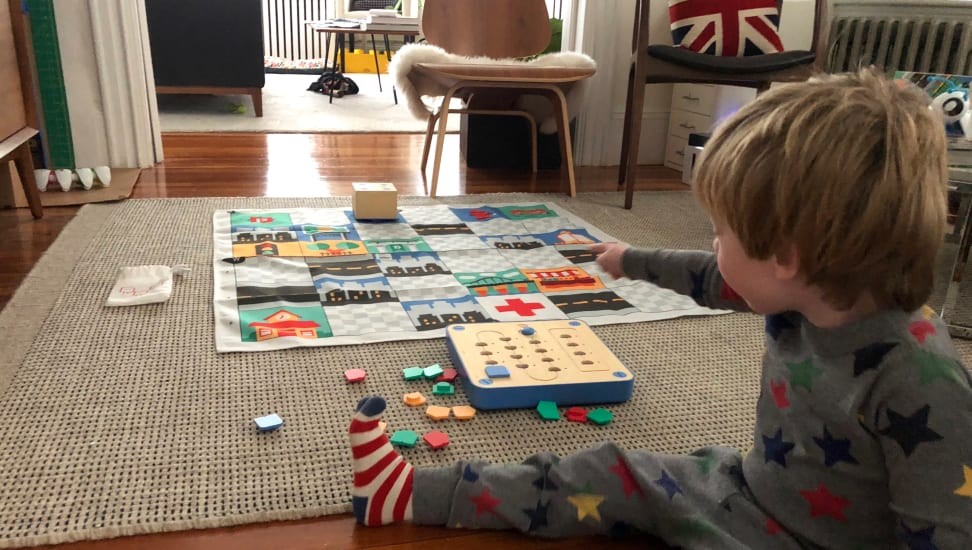
Scratch is an incredibly popular coding language for young learners, known for its user-friendly interface and visual programming blocks. With Scratch, kids can bring their ideas to life by creating interactive stories, games, animations, and more.
It allows them to learn the basics of coding in a fun and engaging way while gaining a deeper understanding of logical thinking and problem-solving skills. By using colorful blocks that represent different commands and actions, children can easily drag and drop them to create their programs without worrying about syntax errors or complex coding concepts.
Scratch empowers young coders to explore their creativity, express themselves through code, and develop essential computational thinking skills that will benefit them in various future careers.
Python
Python is a popular programming language widely used for teaching young learners at Coding Young. With its simple syntax and English-like readability, Python makes it easier for kids to understand and apply coding concepts.
At Coding Young, instructors tailor their lessons to students' individual needs, providing a fun and interactive learning experience in Python. Students have the opportunity to create their own apps using Python, fostering creativity and innovation.
Additionally, Coding Young offers flexible language options for instruction in Python, including English and Arabic.
JavaScript
JavaScript is one of the exciting coding languages that young learners at Coding Young get to explore. With JavaScript, kids can create interactive websites and add dynamic elements to their projects.
They learn how to manipulate HTML and CSS code, making their web pages come alive with animations, games, and even user interactions. At Coding Young, experienced instructors guide students in mastering the fundamentals of JavaScript through hands-on activities and engaging lessons.
With a focus on real-world applications, students discover the power of coding while having fun experimenting with this versatile language.
Fun Coding Games and Projects
Discover exciting coding games and projects like the Scratch Maze Game, Python Turtle Graphics, Web Development using HTML and CSS, creating a virtual pet, and Minecraft Modding for an unforgettable coding experience! Want to know more? Dive into this blog post.
Scratch Maze Game
The Scratch Maze Game is an incredibly fun and interactive coding game that brings the world of programming to young minds in a way that is accessible, engaging, and educational. Designed specifically for kids, this game allows children to learn coding concepts while navigating through exciting mazes and solving challenges.
By immersing themselves in this virtual environment, kids develop problem-solving skills, critical thinking abilities, and the perseverance needed to overcome obstacles - all while having a blast! The Scratch Maze Game provides a fantastic platform for children to explore their creativity and unleash their full coding potential at an early age.
Python Turtle Graphics
Python Turtle Graphics is a fantastic feature that allows kids to unleash their creativity by creating fun graphics and animations using the Python programming language. It provides an interactive and engaging way for young learners to explore coding concepts and develop problem-solving skills.
With Python Turtle Graphics, kids can draw shapes, create patterns, and even animate characters on the screen. This aspect of coding games and projects aims to make learning to code enjoyable while teaching fundamental programming principles.
By creating visually appealing designs and animations, children not only learn about coding syntax but also gain confidence in their abilities to bring their creative ideas to life through coding.
Web Development: HTML and CSS
Web development, specifically HTML and CSS, is an exciting avenue for young learners to explore coding. HTML (Hypertext Markup Language) forms the backbone of web pages by structuring their content, while CSS (Cascading Style Sheets) adds visual appeal and layout.
The combination of these two languages allows kids to create their own websites and bring their ideas to life on the internet. This hands-on approach not only teaches children the fundamentals of web design but also enhances their problem-solving skills and encourages creativity.
By learning how to code with HTML and CSS, kids gain a practical understanding of how websites work while having fun designing and customizing their online creations.
Create a Virtual Pet
Coding is not only about writing lines of code but also about creating something fun and interactive. One exciting coding project that kids can embark on is creating their virtual pet.
With this project, young coders can use their creativity to design and personalize their digital companion, from choosing its appearance to deciding how it behaves. By engaging in the process of building a virtual pet, children not only learn essential coding skills but also develop problem-solving abilities and critical thinking as they figure out how to make their creations respond to certain actions and commands.
This hands-on experience teaches them perseverance and resilience by encouraging them to troubleshoot any issues that arise along the way. Ultimately, by completing this project, kids gain a sense of accomplishment as they see their virtual pet come to life through code.
Minecraft Modding
Minecraft Modding is not only a popular pastime for kids but also an excellent way for them to learn coding skills. By creating their own customizations and additions to the game, children can develop programming abilities and computational thinking.
Minecraft Modding encourages creativity and problem-solving as young minds experiment with code to modify elements within the game. Furthermore, it offers a hands-on learning experience that allows kids to apply coding concepts in a fun and engaging manner.
As a gateway into the world of coding, Minecraft Modding provides an interactive platform for kids to showcase their skills and collaborate with other players, making it an ideal tool for nurturing young coders' passion for technology and innovation.
Effective Strategies for Teaching Kids to Code
Teach coding to kids effectively with interactive tools and creative problem-solving techniques. Discover strategies that promote teamwork and relate coding to real-world applications! Read more for expert tips on teaching kids to code.
Using Interactive Tools
Using interactive tools is a highly effective strategy for teaching kids to code. These tools not only make learning more engaging and fun but also help children understand coding concepts better.
Interactive platforms such as Blockly. games, ScratchJr.org, and CodeCombat.com provide hands-on experiences that allow kids to experiment with coding blocks, create their own games, and solve challenges in an interactive way.
By using these tools, children can see immediate results of their code in action, which boosts their confidence and motivates them to further explore the world of programming. Additionally, interactive tools promote active learning by allowing kids to learn at their own pace while providing instant feedback on their progress.
Breaking Down Concepts
Breaking down coding concepts is crucial when teaching kids how to code. By presenting complex ideas in small, manageable parts, children can better understand and apply them. Small chunks of information prevent overwhelm and facilitate a step-by-step learning process.
This approach helps children develop critical thinking skills by breaking down problems into smaller, more manageable components.
Moreover, breaking down concepts in coding also fosters a growth mindset toward problem-solving. It teaches children that making mistakes is part of the learning journey and encourages them to persevere through trial and error.
In this way, they learn not only the technical aspects of coding but also develop resilience and the ability to troubleshoot when faced with challenges.
By providing clear explanations and tangible examples, teachers can ensure that each child understands the fundamental building blocks of coding before moving on to more advanced topics.
Encouraging Creativity and Problem-solving
Encouraging creativity and problem-solving is a key aspect of teaching kids to code. Through coding, children are given the opportunity to explore their imagination and think outside the box.
They can create interactive stories, design games, or build websites from scratch, allowing their creativity to flourish. Moreover, coding challenges children to solve problems systematically by breaking them down into smaller steps and finding logical solutions.
This process of problem-solving not only enhances their critical thinking skills but also instills in them a sense of resilience and determination. By encouraging creativity and problem-solving through coding, kids develop invaluable skills that will benefit them in various aspects of life beyond the realm of computer programming.
Promoting Teamwork
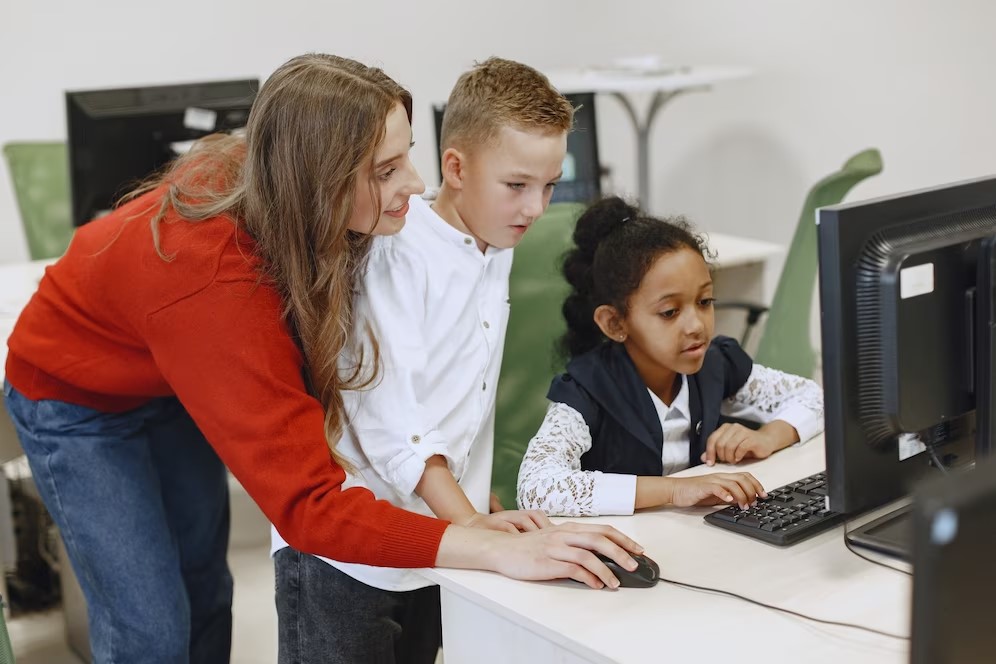
Promoting teamwork is a crucial aspect of teaching kids to code. By encouraging collaboration and cooperation, children learn how to work together towards common goals, problem-solve as a team, and bounce ideas off each other.
Teamwork helps kids develop essential social skills such as communication and active listening while fostering an environment where they can learn from one another's strengths and weaknesses.
Research has shown that teamwork in coding education leads to better engagement and motivation among students, ultimately enhancing their learning experiences. Learning to code collaboratively also prepares kids for future careers where teamwork is paramount, highlighting the importance of promoting teamwork in coding lessons for young minds.
Relating Coding to Real-world Applications
Learning to code is not just about mastering technical skills; it's about understanding how coding can be applied in real-world scenarios. When kids learn to code, they are empowered with the ability to solve problems and create solutions that have practical applications.
Whether it's developing a mobile app, designing a website, or creating an interactive game, coding opens up a world of possibilities for young minds. By relating coding to real-world applications, children can see the direct impact their coding skills can have on industries like technology, healthcare, and entertainment.
They gain a deeper appreciation for the relevance and importance of coding in today's digital age.
Overcoming Challenges in Teaching Coding
Overcoming challenges in teaching coding is crucial for providing young learners with the skills they need to thrive in a digital world. From addressing the fear of complexity to fostering engagement and interest, this section explores strategies for effective instruction.
Read on and unlock the secrets to empowering kids through coding education!
Fear of Complexity
Many young minds are intimidated by the perceived complexity of coding. At Code Like a Kid, we understand this fear and strive to make learning to code a fun and engaging experience.
Our interactive lessons break down complex concepts into bite-sized pieces, making it easier for kids to grasp and apply their coding skills. With our proven teaching methods, 95% of our students have achieved success in coding.
Don't let the fear of complexity hold your child back from exploring the exciting world of coding - join Code Like a Kid today and watch them thrive!
Engagement and Interest
Engaging children and sustaining their interests is crucial when teaching them to code. By incorporating interactive tools, coding games, and fun projects, educators can capture the attention of young learners.
Research has shown that when kids find coding enjoyable and exciting, they are more likely to stay engaged in the learning process. This engagement not only promotes a deeper understanding of coding concepts but also fosters a passion for technology and problem-solving skills.
In fact, studies have revealed that early exposure to coding can spark curiosity and lead to further exploration of STEM fields later in life. So, by creating an engaging learning environment filled with hands-on activities and real-world applications, we can ensure that kids remain motivated throughout their coding journey while developing valuable skills for the future.
Diverse Learning Styles
At Code Like a Kid, we recognize and embrace the fact that young learners have diverse learning styles. We understand that not every child learns in the same way, which is why our coding lessons cater to various learning preferences.
Whether your child is a visual learner who benefits from interactive graphics or a kinesthetic learner who thrives on hands-on activities, our program has something for everyone. By adapting our teaching methods to accommodate different learning styles, we ensure that every student can fully engage with and understand the coding concepts being taught.
With personalized instruction tailored to their unique needs, children at Code Like a Kid are empowered to reach their full potential and excel in their coding journey.
Collaboration and Problem-Solving Skills
Collaboration and problem-solving are essential skills that children can develop through coding. When kids engage in coding projects, they often work together to brainstorm ideas, solve challenges, and create innovative solutions.
By collaborating with their peers, they learn how to communicate effectively, listen to different perspectives, and compromise when necessary. They also develop problem-solving skills as they encounter obstacles during the coding process.
Addressing the Gender Gap
Code Like a Kid is committed to addressing the gender gap associated with teaching coding. By creating an inclusive and supportive learning environment, we strive to empower girls to pursue their interests in coding.
Our program actively encourages and supports female students, providing them with equal opportunities to excel in computer programming. We believe that by fostering diversity in this field, we can unlock untapped potential and drive innovation for a brighter future.
Join us at Code Like a Kid and let's bridge the gender gap together!
Useful Resources for Parents and Educators
Discover a wealth of coding books, apps, online classes, educational websites, and STEM kits to support your child's coding journey. Expand their skills and spark their curiosity with these invaluable resources.
Coding Books
Popular coding books like "Hello Ruby" by Linda Liukas, "Coding Projects in Python" by DK, and "JavaScript for Kids" by Nick Morgan provide interactive exercises and step-by-step instructions for children to learn to code.
These books offer an engaging way for young learners to explore various programming concepts and develop their coding skills. With colorful illustrations and age-appropriate language, these coding books make learning fun and accessible for kids of all ages.
Whether they want to create games, build websites, or dive into robotics, these coding books serve as valuable resources that inspire creativity and ignite a passion for coding in young minds.
Coding Apps
Coding apps like Scratch, Tynker, and Codespark's Codespark Academy are revolutionizing the way kids learn to code. With interactive and engaging platforms, these apps make coding accessible and fun for young minds.
Kids can dive into puzzles, coding tasks, and games that teach them important programming concepts while keeping them entertained. Furthermore, online platforms like Code.org, Khan Academy, and Coursera offer comprehensive coding classes for different age groups and skill levels.
These classes provide a structured learning environment where kids can explore various programming languages and ignite their passion for coding. By utilizing these innovative coding apps and online courses, parents can empower their children with valuable skills that will set them on the path to success in today's digital world.
Important fact 1: Coding apps like Scratch, Tynker, and Codespark's Codespark Academy offer interactive and engaging platforms for kids to learn coding through puzzles, coding tasks, and games.
Online coding classes
Online coding classes provide a convenient and accessible way for kids to learn coding from the comfort of their own homes. These classes are associated with useful resources for parents and educators, offering interactive lessons and personalized instruction to help young learners develop their coding skills.
With online coding classes like Coding Young, which has had hundreds of satisfied students and 4 years of teaching experience, children can receive a high-quality education in programming that prepares them for future careers in technology.
Parents and educators have praised Coding Young's approach, with a 95% student success rate and a rating of 4.8 out of 5. Upon enrollment at Coding Young, students also receive a personalized learning plan and class schedule to ensure optimal progress in their coding journey.
Educational Websites
Educational websites are a fantastic resource for parents and educators looking to introduce kids to the world of coding. These platforms provide interactive and engaging coding lessons that cater specifically to young learners.
Websites like Code.org, Khan Academy, and ScratchJr.org offer a wide range of tutorials, games, and projects designed to make learning fun and accessible for children. By utilizing these online resources, kids can develop critical thinking skills, and problem-solving abilities, and even gain real-world coding experience at their own pace.
With the help of educational websites, children can explore different programming languages like Scratch and Python while discovering their passion for coding in an exciting and dynamic way.
STEM kits and toys
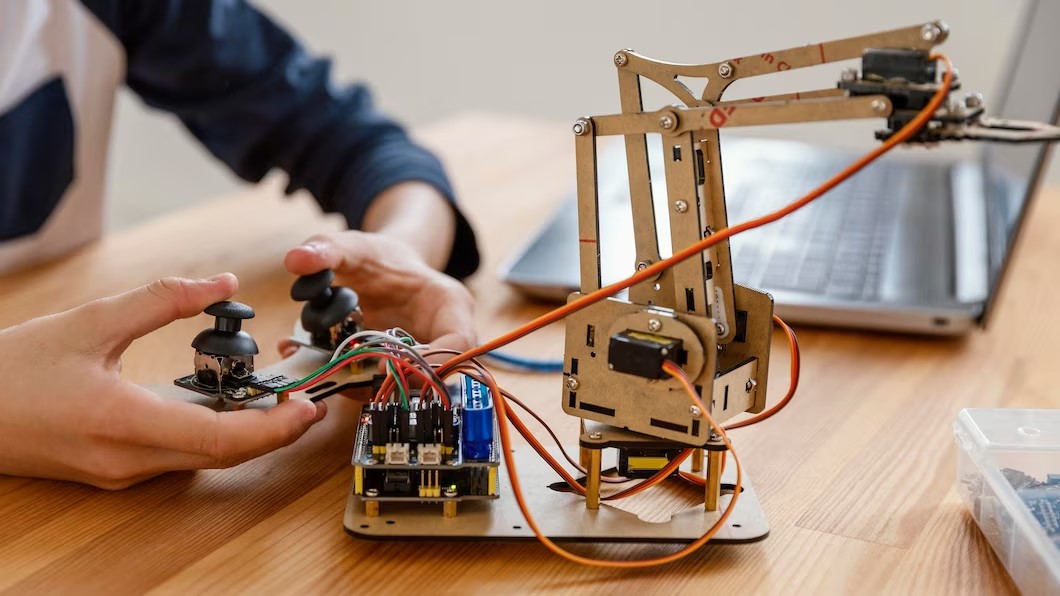
STEM kits and toys like LittleBits, LEGO Education, and Ozobot provide young minds with hands-on learning experiences that make coding fun and interactive. These resources offer a wide range of coding projects and games such as Scratch Maze Game, Python Turtle Graphics, and Minecraft Modding, allowing kids to learn programming skills while having a blast.
By engaging children in coding activities, STEM kits, and toys help them develop problem-solving abilities, critical thinking skills, creativity, teamwork, resilience, and even entrepreneurship.
Moreover, these resources break down complex coding concepts into manageable chunks so that kids can gradually build their knowledge without feeling overwhelmed. With STEM kits and toys as part of the Code Like a Kid program's offerings for young coders, parents, and educators can support children in developing crucial coding skills while laying a solid foundation for future career opportunities in the digital world.
Conclusion
In conclusion, "Code Like a Kid: Fun and Interactive Coding Lessons for the Young Minds" offers an exciting opportunity for kids to unlock their creativity, enhance their problem-solving skills, and explore the world of coding.
By learning popular languages like Scratch, Python, and JavaScript through engaging games and projects, young learners can develop critical thinking abilities while having fun. With effective teaching strategies and valuable resources available to parents and educators, children can embark on a coding journey that will not only boost their future career potential but also foster teamwork, entrepreneurship, and resilience.
So let's empower our young minds with the tools they need to code like champions!
FAQs
1. What age group are these coding lessons suitable for?
Our coding lessons are designed for young minds aged 8 to 14, providing age-appropriate content and activities to engage and challenge them effectively.
2. Do I need any prior coding experience to enroll my child in these lessons?
No prior coding experience is necessary. Our lessons are specifically crafted to introduce coding concepts from the basics, making them accessible and enjoyable for beginners.
3. What coding languages or platforms will my child learn in these lessons?
We offer a diverse range of coding languages and platforms, including Scratch, Python, and JavaScript, enabling your child to gain exposure to various coding tools and broaden their skill set.
4. How are the lessons structured to ensure an interactive and engaging experience?
Our lessons are carefully designed to be interactive and engaging through a combination of hands-on coding activities, creative projects, and interactive exercises. We foster a collaborative learning environment to enhance the overall experience.
5. Are these lessons conducted online or in person?
Currently, our coding lessons are conducted online, allowing your child to participate from the comfort of their home. This approach ensures flexibility, convenience, and accessibility for learners from various locations.







